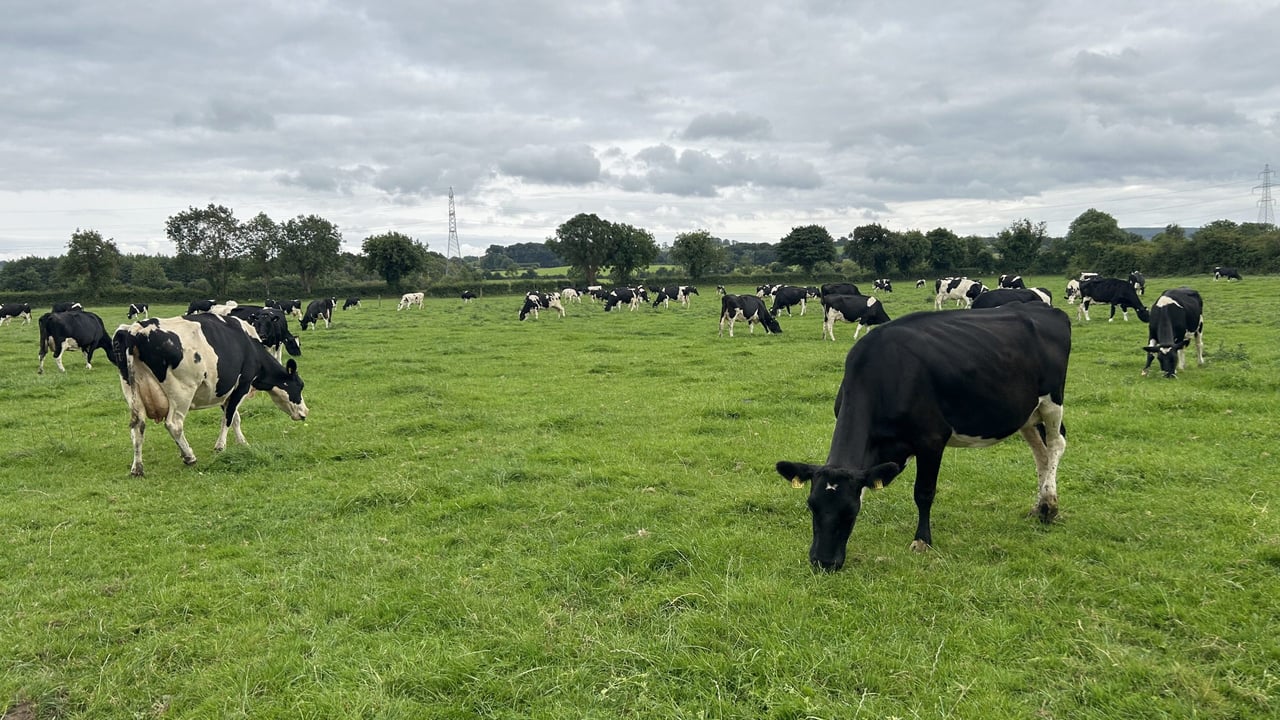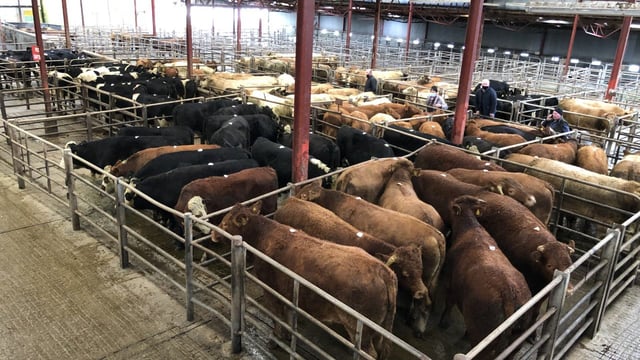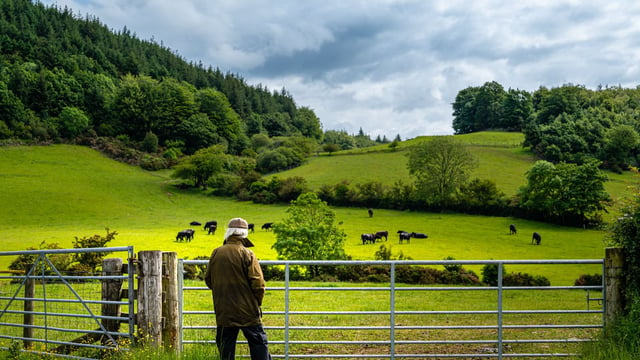Dairy advice: Managing the cow from now to breeding
As we are now into April and the weather is improving, maximising the cow's grass intake while making sure she is meeting her energy requirements up until breeding is crucial.
The main thing when a cow calves is to get her recovered and to monitor her body condition score (BCS) - this is vital, as a cow should calve down with a BCS of ideally 3.25 and should not lose anymore than 0.5 units of a BCS.
Cows with low BCS at calving will have lower milk yield with reduced fat content and are more likely to have retained placentas, a longer postpartum anoestrus period, increased likelihood of weak or silent heats, and poor response to synchronisation.
At this stage of the lactation, with many cows beginning to hit their peak milk supply, any cow that is in poor condition should be identified now and marked with tape or spray to indicate that she is only to be milked once a day (OAD), which will allow her to build condition.
Cows that calve after April 1 should also be considered for OAD milking as, if you want to keep them in the herd and get them back in calf as quick as possible, this is an option to help them recover quicker.
An idea to have in mind that can be hugely beneficial is to collect blood samples from a subset of cows before the breeding season to ensure that herd mineral status is satisfactory.
Timely intervention may be needed if key minerals are deficient.
Veterinary advisor at Tirlan, Joris Sommers spoke to attendees at a Teagasc breeding week event that was held in Teagasc Grange last week.
He told attendees that the first step is to make sure cows are cycling ahead of breeding, which means that pre-breeding tail painting will have to commence in the coming days, at least three weeks before the mating start date.
Non-bullers will have to be identified and treated with metricure or whatever is advised by your vet.
The cows that are not bulling by heat detecting for a full cycle of 24 days and the non-bullers that are calved over 35 days and still showing no signs of heat should be checked.
The cows should be tail-painted a certain colour now, and once they have shown signs of cycling and their tail paint has been rubbed, they should be tail-painted a different colour to notify that they are cycling.
Metritis is a systemic illness with a foul-smelling vaginal discharge occurring within 21 days after calving, for which a treatment protocol should be discussed with your vet.
Cows that have a had a difficult calving, went down with milk fever, have retained their placentas, or have had any issues in the past should also be checked by your vet.

Retained placenta is a risk factor for developing metritis and endometritis, and difficult calvings or any metabolic issues can reduce the fertility of the animal.
Some of these cows will be fine and require no help or intervention, while some will require treatment and others may need to be washed out before breeding begins.
If there are a number of cows that have not come into heat during the breeding season, some sort of synchronisation programme may be discussed with your vet to ensure the cows get the best possible chance of going back in calf.
All cows and heifers should be vaccinated prior to breeding for Leptospirosis, (Bovine Viral Diarrhoea) BVD, and (Infectious Bovine Rhinotracheitis) IBR to protect the cow from any reproductive problems or fetal loss.
At the Teagasc event, Sommers urged farmers to make sure that any cow that is lame is treated, as lame cows will show less signs of oestrus and will struggle to go back in-calf.
He also said heifers should also be weighed at this point and be put out to grass, with any heifers that are behind target potentially separated and given extra feed.
Sommers also advised that a dung sample should be collected from the replacement heifers to see if they should be dosed before mating.
Sommers highlighted the importance of meeting the cows energy requirements at this time of year, and encouraged farmers to analyse their milk constituents to give them an indication of the cow's energy intakes.
Low or dropping milk protein highlights that cows are not getting enough energy in the diet, which results in cows milking off their back to compensate for the lack of energy provided in the diet.
A fat:protein ratio greater than 1:4 indicates that your herd is suffering from negative energy balance and body condition loss.
Sommers highlighted that if energy requirements are not met, the cow produces ketones, too much of which can lead to poor fertility.
Milk urea levels are another indicator of the herd's energy intakes, as milk urea indicates the crude protein in a cow's diet, which is formed from the metabolism of amino acids and body protein.
Ideally, you want your milk protein levels to be between 20-35mg/dl, as anything above 35mg/dl indicates that there is not enough energy in the diet.
Sommers warned that if milk protein levels are high tomorrow, it can have an affect in a month's time.





